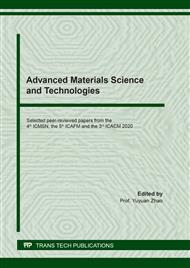p.3
p.9
p.15
p.23
p.31
p.41
p.49
p.56
Ionically Self-Assembled Monolayer pH Sensitive Films-Fabrication and their Long Term Response to Varying Temperature Conditions
Abstract:
This study presents the long time effects of varying temperature conditions on pH-responsive films deposited on glass slides. The films were fabricated from Brilliant Yellow and poly (allylamine hydrochloride) through ionically self-assembled monolayer technique using an automated slide strainer. The absorbance of the films was monitored and the effect of varying temperature on the optical properties of the films was studied. We found that as the films are maintained at increasing temperatures their absorbance slightly decreased. As the temperature increased the percent change decreased reaching a plateau. Films kept at low temperatures of 3.24 °C and below freezing (-9.02 °C) had a small increase in absorbance. Finally, we monitored the absorbance of films kept at room temperature over a long time (128 days) and found that the films showed decreased absorbance by 19%.
Info:
Periodical:
Pages:
15-22
Citation:
Online since:
March 2021
Authors:
Price:
Сopyright:
© 2021 Trans Tech Publications Ltd. All Rights Reserved
Share:
Citation:


